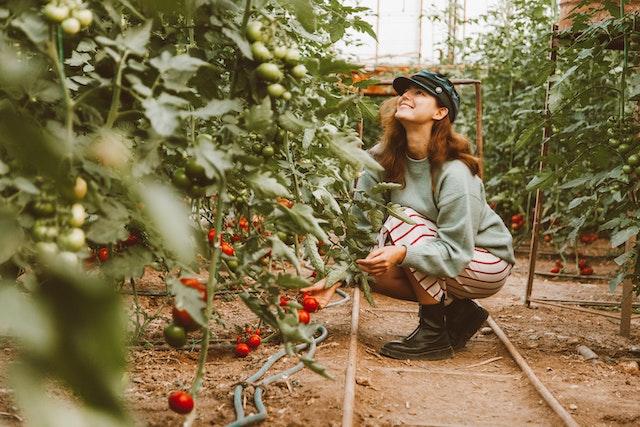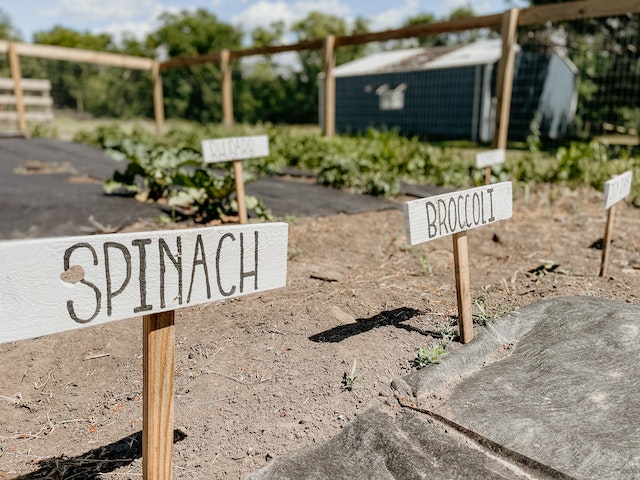How to prepare your garden to spring
How to prepare your garden to spring

Every year, on that last day of winter the sun melts the last bits of snow and heats the ground so much that you can literally smell how fresh and earthy it is. Even those who have never gardened before suddenly feel the need to get their hands dirty and plant something when the grass begins to turn greener and the spring showers begin to fall.
Greater Cleveland's gardening experts are prepared and ready to assist individuals with an enthusiastic green thumb find their starting point. They have fresh veggies and herbs as well as annuals and perennials in a rainbow of flowers. According to gardener Sandi Cesorov of the Holden Arboretum, the best time to start indoor sowing for fruit and vegetable gardens is in March, specifically between March 1 and 15.
There are many things you can do to get the soils, flower beds, and seedlings ready for the spring and summer even if the Northeast Ohio growing season doesn't officially begin for another several weeks.
Every year, on that last day of winter the sun melts the last bits of snow and heats the ground so much that you can literally smell how fresh and earthy it is. Even those who have never gardened before suddenly feel the need to get their hands dirty and plant something when the grass begins to turn greener and the spring showers begin to fall.
Greater Cleveland's gardening experts are prepared and ready to assist individuals with an enthusiastic green thumb find their starting point. They have fresh veggies and herbs as well as annuals and perennials in a rainbow of flowers. According to gardener Sandi Cesorov of the Holden Arboretum, the best time to start indoor sowing for fruit and vegetable gardens is in March, specifically between March 1 and 15.
There are many things you can do to get the soils, flower beds, and seedlings ready for the spring and summer even if the Northeast Ohio growing season doesn't officially begin for another several weeks.
1. Refresh those beds
Wait until temperatures are regularly above 50 degrees before removing any dead plant matter, advises Dawn Gerlica, senior horticulture at Holden Woods & Gardens. Some bee species deposit their eggs in the stems of our flowers towards the end of the growing season, while several butterflies and moths survive winter as eggs, larvae, or pupae in the leaf litter surrounding the base of the plants, waiting for the proper temperatures to emerge, according to the expert.
2. Calculate the soil pH
Do-it-yourself kits are offered at garden centers, as per Noelle Clark Akin, manager of training and education at Petitti Garden Center. You should search for any imbalanced regions, such as those that are very acidic or basic, she advises. The optimal range is between 6.0, a somewhat acidic value, and 7.0, a neutral value. Use a suitable commercially manufactured product in accordance with the manufacturer's directions to accomplish it (Akin recommends Lightning Lime).
1. Refresh those beds
Wait until temperatures are regularly above 50 degrees before removing any dead plant matter, advises Dawn Gerlica, senior horticulture at Holden Woods & Gardens. Some bee species deposit their eggs in the stems of our flowers towards the end of the growing season, while several butterflies and moths survive winter as eggs, larvae, or pupae in the leaf litter surrounding the base of the plants, waiting for the proper temperatures to emerge, according to the expert.
2. Calculate the soil pH
Do-it-yourself kits are offered at garden centers, as per Noelle Clark Akin, manager of training and education at Petitti Garden Center. You should search for any imbalanced regions, such as those that are very acidic or basic, she advises. The optimal range is between 6.0, a somewhat acidic value, and 7.0, a neutral value. Use a suitable commercially manufactured product in accordance with the manufacturer's directions to accomplish it (Akin recommends Lightning Lime).
3. Encourage growth
Giving plants the nutrients they need naturally without wasting food resources is composting. Paper towels, egg shells, citrus fruit peels, and rice are just a few examples of household items and meals that may be composted and utilized as plant fertilizer, according to Rust Belt Riders. Gerlica advises delaying the use of chemical fertilizers until after plants have really been planted. You don't want all of it to get washed away by the spring rains, she advises.
4. Start seeds indoors
Akin advises waiting until late March or April to plant "hot crops" like tomatoes, peppers, and eggplant as well as flowers like marigolds and zinnias. She advises putting two to three seeds in a sterile, drainage-equipped container (a yogurt box with holes punched in the bottom that has been washed in hot, soapy water, then rinsed in a 10-percent bleach solution). Gerlica advises consulting the Farmer's Almanac for more planting advice.
3. Encourage growth
Giving plants the nutrients they need naturally without wasting food resources is composting. Paper towels, egg shells, citrus fruit peels, and rice are just a few examples of household items and meals that may be composted and utilized as plant fertilizer, according to Rust Belt Riders. Gerlica advises delaying the use of chemical fertilizers until after plants have really been planted. You don't want all of it to get washed away by the spring rains, she advises.
4. Start seeds indoors
Akin advises waiting until late March or April to plant "hot crops" like tomatoes, peppers, and eggplant as well as flowers like marigolds and zinnias. She advises putting two to three seeds in a sterile, drainage-equipped container (a yogurt box with holes punched in the bottom that has been washed in hot, soapy water, then rinsed in a 10-percent bleach solution). Gerlica advises consulting the Farmer's Almanac for more planting advice.

5. Position in a sunny area
Put the boxes in a warm, sunny location that doesn't become too cold at night. As per Gerlica, seeds require temperatures that you would feel comfortable in, which are often between 70 and 75 degrees. Keep the soil damp but not drenched. They will lose more roots when the earth dries up. Akin says that the soil you plant in should be firm and dry enough to walk on without leaving any tracks until the plants are ready to be placed outside in the sunshine.
6. Transition plants outdoors
Akin claims that after a plant has grown two or more leaf sets, it may more easily adapt to life outside. For about a week, start the transition by relocating the plants to a window in an unheated garage during the day and bringing them inside at night. From late March to early April, cold crops and hardy early bloomers may start their shift. If cold weather comes, be ready to cover the plants.
5. Position in a sunny area
Put the boxes in a warm, sunny location that doesn't become too cold at night. As per Gerlica, seeds require temperatures that you would feel comfortable in, which are often between 70 and 75 degrees. Keep the soil damp but not drenched. They will lose more roots when the earth dries up. Akin says that the soil you plant in should be firm and dry enough to walk on without leaving any tracks until the plants are ready to be placed outside in the sunshine.
6. Transition plants outdoors
Akin claims that after a plant has grown two or more leaf sets, it may more easily adapt to life outside. For about a week, start the transition by relocating the plants to a window in an unheated garage during the day and bringing them inside at night. From late March to early April, cold crops and hardy early bloomers may start their shift. If cold weather comes, be ready to cover the plants.





























